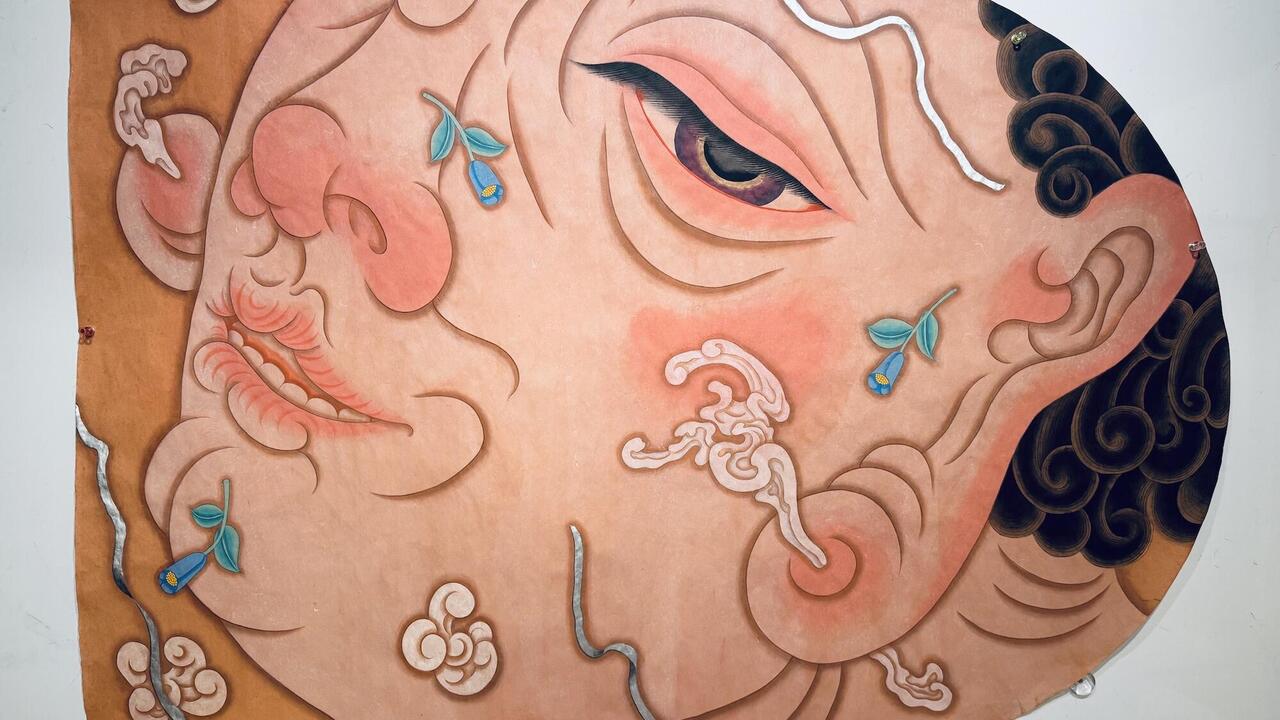Rafal Bujnowski
No depth, no illusions, just paint
No depth, no illusions, just paint
Work, marriage, home, children, holidays, television, houses, cars and the Pope: you could say that this is what Rafa? Bujnowski’s work is about. With a few swiftly executed but exact brushstrokes the artist pins down these everyday motifs in the most deadpan way imaginable. Bujnowski churns out his paintings like Polaroids. Canvas after canvas shows reality to be as flat as it is.
Often Bujnowski exhibits his canvases as serially produced artefacts. Obrazy do mieskania (Paintings for an Interior, 2002), for instance, is a whole set of paintings for which the artist chose five motifs – a married couple, a builder at work, a child playing in a sandpit, a glass of juice and four lemons – and reproduced each of them on small canvases up to 50 times. In exhibitions he casually propped them up against the wall in rows on the floor beneath larger canvases depicting all five motifs and, like manuals, instructed prospective buyers on where to hang them on the floor-plan of a standard apartment. Similarly, the paintings were also exhibited in an IKEA store, integrated into the furniture displays. Obrazy przedmioty (Paintings Objects, 1999–2002) is another assortment of paintings designed to furnish a model home. They comprise shaped canvases resembling bricks, planks, double-glazed windows, video-tapes, a flat-screen monitor, a remote control and a portrait of the Pope – all given away at bargain prices. In the window display of St Martin’s College in London, for instance, Bujnowski advertised the tape-shaped canvases as Cheap Art from Poland (2000) and sold them for £19.90 each.
Together with Marcin Maciejowski and Wilhelm Sasnal, in 1994 Bujnowski founded the (now defunct) Kraków-based group ?adnie, which means ‘nice’ in Polish. Like its English equivalent, ?adnie is an everyday word that can mean a lot or nothing at all, and be used either appreciatively or sarcastically. By the same token, Bujnowski’s attitude toward s the state of society, reflected in his deadpan style, remains ambiguous. He could simply be acknowledging the reality of his surroundings in the same way that casually calling something ‘nice’ can be a form of giving no comment at all. Still, saying little can imply a lot. In this sense the work may in fact also be portraying the post-socialist condition in Poland. Bujnowski’s laconic style of reducing the appearance of everything he paints to a state of bare facticity (including motifs of family life) could reflect his country’s conversion to an ideology of rabid materialism, in which a new fixation on commodity culture goes hand in hand with an adherence to Catholic family values and a typical biography of early marriage. Yet again, it is hard to figure out if Bujnowski’s attitude towards the politics of home-building is appreciative or sarcastic. Rather, his works express mixed feelings on the issue, in a way that allows them to stay mixed.
When you look at Bližniaki (Twins, 2003), a quickly done series of portraits of newborn twins, next to Graboszyce (2002), a series of shaped canvases representing family homes and apartment blocks and named after his hometown, it seems that Bujnowski paints a picture of a society where lives are interchangeable, where everything is standardized and the new is just more of the same. Then again, in Šnieg (Snow, 2002–3), a series of paintings of cars, bikes and benches covered in thick snow, the instant when all things look the same under a white blanket is portrayed as a moment of beauty. There are also truly emotional works, such as Obraz matki Whistlera (Whistler’s Mother’s Painting, 2002). Here Bujnowski reproduced the painting of a boat in the harbour in the background of James Abbott McNeill Whistler’s famous Portrait of the Painter’s Mother (1871) and took a video of his wife feeding his child with the painting on the wall behind them. Oprawione (Framed, 2003) is a series of repainted family photos of happy days on the beach and images of political assemblies from the times of the Cold War. These works in turn give you a feeling that, even though everything becomes exchangeable within a capitalist economy, some things in life remain irreplaceable, just as history is irrevocable.
In the end, however, such interpretations must stay speculative as Bujnowski strictly confines his outlook to the surface of things. This stance may be captured in Pe?ne zanurzenie (Full Submerge, 2003), a triptych that, in three stages, shows a submarine descending into the sea. When new realities make life become flat, it seems to say, the best thing to do is to submerge yourself below the surface of the world and disappear.















